
Empowering Your Journey: Portable Solar Power
Embark on a journey where your power source is as flexible as your spirit with portable solar power. In this exploration, we unveil the convenience, versatility, and sustainable energy solutions that make portable solar power a game-changer for those on the move.
Unfolding Freedom: The Essence of Portability
Portable solar power epitomizes freedom. With compact and lightweight designs, these systems unfold possibilities for adventurers, campers, and anyone seeking an independent power source. The ability to capture sunlight on the go ensures that your energy needs are met wherever your journey takes you.
Versatility in Outdoor Adventures: Beyond Traditional Boundaries
For outdoor enthusiasts, portable solar power transcends traditional boundaries. Whether you’re camping, hiking, or backpacking, these systems adapt to your lifestyle. They recharge devices, power camping gear, and even provide a sustainable energy source for small appliances, adding a touch of modern convenience to your outdoor escapades.
Sustainable Energy Anywhere: Off-Grid Independence
The beauty of portable solar power lies in its off-grid capabilities. No need to rely on power outlets or disposable batteries—simply unfold your solar panels, bask in the sunlight, and generate clean, renewable energy. It’s a sustainable and eco-friendly solution that promotes off-grid independence, aligning with the principles of eco-conscious living.
Charging On-the-Move: Stay Connected Anywhere
In a world where staying connected is paramount, portable solar power ensures you’re never without a power source. Whether you’re on a road trip, hiking trail, or a beach getaway, these systems keep your devices charged. The versatility of portable solar power becomes particularly valuable when traditional charging options are scarce.
To explore the convenience and versatility of portable solar power, visit Portable Solar Power. This resource provides valuable insights into the world of portable energy solutions, helping you make informed choices for your on-the-move energy needs.
Compact Design, Maximum Power: Efficiency in Every Fold
The compact design of portable solar power doesn’t compromise on efficiency. These systems are engineered to maximize power output while remaining easy to carry. Folding solar panels, solar chargers, and portable power stations all embody the efficiency that is crucial for meeting energy needs in a compact and streamlined manner.
Emergency Preparedness: A Reliable Backup
Beyond recreational use, portable solar power serves as a reliable backup during emergencies. Whether it’s a power outage or a natural disaster, having a compact and efficient energy solution can be a lifeline. Portable solar power systems are easy to store and can provide a reliable source of power when traditional options fail.
Sustainable Travel: Reducing Your Carbon Footprint
For eco-conscious travelers, portable solar power is a game-changer. Whether you’re exploring a new city or venturing into the wilderness, these systems allow you to travel sustainably. By harnessing the power of the sun, you reduce reliance on non-renewable energy sources, contributing to a greener and more sustainable travel experience.
Innovations in Technology: The Future of Portable Power
As technology advances, the future of portable solar power holds exciting possibilities. From improved efficiency and enhanced storage capacity to innovations in lightweight materials, ongoing research and development promise to make portable solar power even more accessible and efficient. The journey towards a future powered by portable solar solutions is just beginning.
Portable solar power is more than a technological innovation; it’s a lifestyle enabler. Explore the possibilities and make informed choices for your on-the-move energy needs at Portable Solar Power. Unfold a future where your energy source is as flexible and dynamic as your adventures.
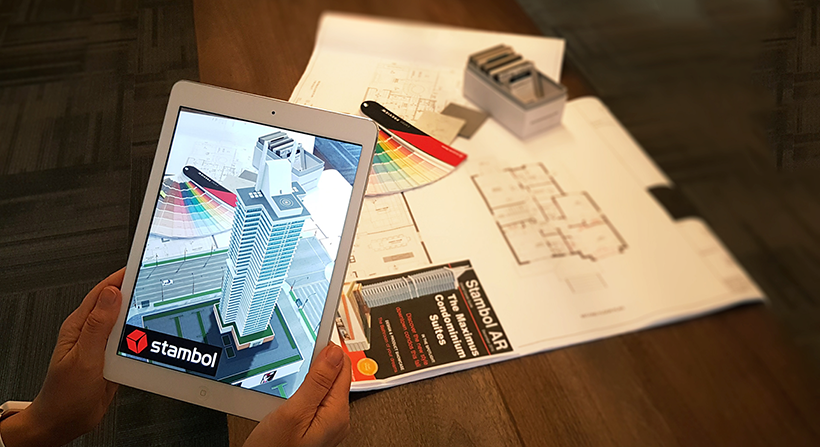
Architectural Innovation: Exploring the Realm of AR
Miracle February 11, 2024 Article
Architectural Innovation: Exploring the Realm of AR
Augmented Reality (AR) is transforming the field of architecture, ushering in a new era of design, visualization, and collaboration. Let’s delve into how AR is reshaping the architectural landscape and paving the way for innovative and immersive experiences.
Enhancing Design Visualization with AR
In the realm of architecture, visualizing design concepts is a crucial phase. AR technology provides architects with the tools to superimpose digital models onto the physical world. This allows stakeholders to experience a proposed structure in its intended environment, fostering a deeper understanding of design elements and spatial relationships. The result is a more immersive and effective design visualization process.
AR in Collaborative Design Processes
Collaboration is at the core of architectural projects, involving architects, clients, engineers, and various stakeholders. AR facilitates collaborative design processes by enabling real-time, interactive experiences. Stakeholders can collectively view and manipulate 3D models, providing instant feedback and fostering a more iterative and inclusive design approach. This collaborative aspect streamlines decision-making and enhances communication throughout the project lifecycle.
NeverEmpty’s AR Solutions for Architecture
In the realm of AR in architecture, NeverEmpty stands out as a leader. NeverEmpty’s AR solutions empower architects with cutting-edge tools for design visualization and collaborative processes. The platform’s immersive capabilities contribute to a more dynamic and engaging architectural workflow.
Explore NeverEmpty’s AR in Architecture solutions here.
On-Site Construction Assistance
AR extends its influence beyond the design phase and onto construction sites. Through AR applications, architects and construction teams can overlay digital models onto physical structures, providing on-site guidance and ensuring accurate implementation of design elements. This real-time assistance enhances construction precision and reduces the likelihood of errors, ultimately contributing to more efficient and cost-effective projects.
AR for Client Presentations and Marketing
AR plays a pivotal role in client presentations and marketing within the architectural industry. Architects can create AR experiences that allow clients to virtually walk through a proposed space, exploring every detail in a highly interactive manner. This not only impresses clients but also helps them make more informed decisions, leading to greater client satisfaction and project success.
Efficient Space Planning and Utilization
AR aids architects in optimizing space planning and utilization. By visualizing how different design elements fit within a space, architects can make more informed decisions about layout, functionality, and aesthetics. This efficiency contributes to the creation of spaces that are not only visually appealing but also practical and well-utilized.
AR’s Contribution to Sustainable Design
Sustainable design is a growing focus in architecture, and AR plays a role in advancing this agenda. Architects can use AR to simulate the environmental impact of design decisions, such as sunlight exposure and energy efficiency. This enables architects to make more sustainable choices during the design phase, aligning with the industry’s commitment to eco-friendly practices.
Future Trends and Innovations in AR Architecture
As AR continues to evolve, the future of AR in architecture holds exciting possibilities. From advancements in holographic displays to integration with artificial intelligence for more intuitive design assistance, the trajectory of AR in architecture promises continuous innovation. Staying at the forefront of these trends positions architects to harness the full potential of AR in shaping the future of architecture.
In Conclusion: Transforming Architectural Experiences
The integration of AR into architecture marks a paradigm shift in how we design, visualize, and experience the built environment. From enhanced design visualization to on-site construction support, AR brings a new dimension to architectural processes. With industry leaders like NeverEmpty driving innovation, the fusion of AR and architecture is destined to redefine how we conceive and create the spaces we inhabit.
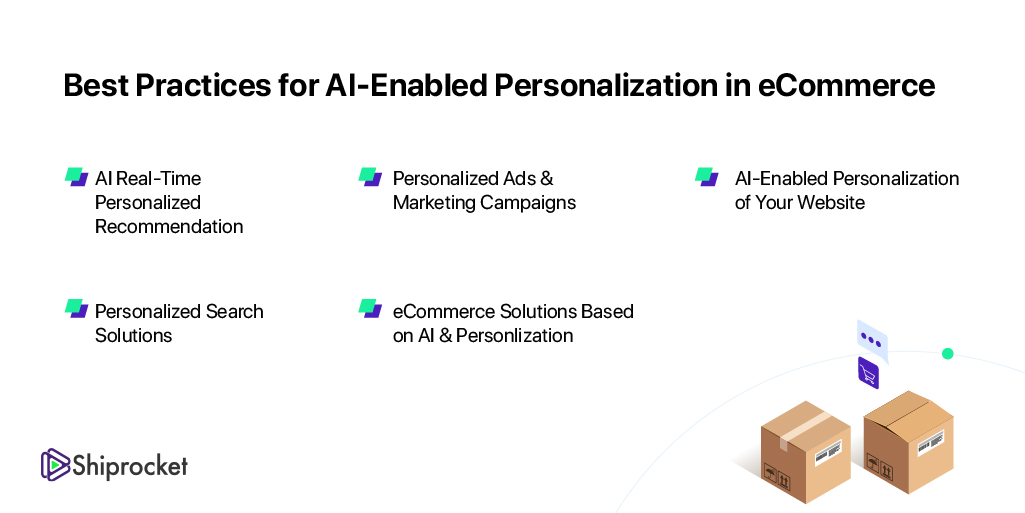

E-commerce Personalization: Tailoring Experiences
Personalization in e-commerce has become a cornerstone for businesses aiming to deliver unique and tailored experiences to their customers. By leveraging data insights and advanced technologies, e-commerce platforms can customize interactions, enhance customer satisfaction, and drive increased engagement and sales.
1. Understanding E-commerce Personalization
E-commerce personalization involves the customization of the online shopping experience based on individual user behavior, preferences, and demographics. It goes beyond merely recommending products; it encompasses personalized product suggestions, content, offers, and even website layouts tailored to meet the specific needs and desires of each customer.
2. Leveraging Data for Personalization
Data lies at the heart of e-commerce personalization. Utilizing customer data—such as browsing history, past purchases, location, and demographic information—allows e-commerce platforms to create personalized experiences. Advanced analytics and machine learning algorithms process this data to generate insights and patterns, enabling businesses to deliver highly targeted and relevant content to their customers.
3. Customized Recommendations and Suggestions
One of the primary features of e-commerce personalization is the provision of customized product recommendations. By analyzing a user’s behavior and preferences, algorithms can suggest products that align with their interests. These recommendations significantly enhance the shopping experience by presenting users with items they are more likely to be interested in, ultimately boosting conversion rates and customer satisfaction.
4. Personalized Marketing and Communication
Personalization extends to marketing efforts and communication strategies. E-commerce platforms utilize personalized emails, notifications, and advertisements to engage customers with content that resonates with their preferences. Tailoring marketing messages based on a customer’s past interactions enhances relevance and increases the likelihood of conversion.
5. Enhancing User Experience and Loyalty
E-commerce personalization plays a pivotal role in improving user experience and fostering customer loyalty. Tailored experiences make customers feel valued and understood, leading to increased satisfaction and trust in the brand. Moreover, personalized interactions contribute to building long-term relationships with customers, encouraging repeat purchases and fostering brand advocacy.
Integrating e-commerce personalization into business strategies has become a necessity in the competitive online marketplace. It’s not just about offering products; it’s about curating experiences that resonate with individual customers, creating a sense of connection and understanding.
For a deeper understanding of how E-commerce Personalization can transform your business, explore E-commerce Personalization and discover the tools and strategies driving personalized experiences in the online retail landscape.

Empowering Communities Government Solar Panels Initiative
Miracle February 5, 2024 ArticleEmpowering Communities: Government Solar Panels Initiative
Lighting the Way to a Sustainable Future
In a world where environmental concerns are at the forefront, governments worldwide are stepping up to the plate. The implementation of government-sponsored solar panel initiatives is becoming a shining beacon of hope for a greener and more sustainable future.
Harnessing Solar Power for the Masses
Government solar panel initiatives aim to make the power of the sun accessible to the masses. By investing in solar technology, governments are not only reducing their carbon footprint but also empowering communities to take control of their energy consumption. It’s a win-win situation for both the environment and the people.
Promoting Energy Independence
One of the primary goals of government-sponsored solar panel programs is to promote energy independence. By providing citizens with the means to generate their electricity, governments are lessening dependence on traditional power sources. This shift towards energy self-sufficiency is a significant step towards a more resilient and sustainable energy infrastructure.
Economic Boost Through Green Technology
Government initiatives are not just about environmental impact; they are also about boosting the economy. The investment in solar technology creates jobs in the renewable energy sector, fostering economic growth. As the solar industry expands, so does the potential for innovation and job opportunities, contributing to a more robust and diverse economy.
Incentivizing Solar Adoption
To encourage citizens to embrace solar technology, governments often offer incentives and subsidies. These can range from tax credits to reduced energy bills for households utilizing solar panels. These incentives make the transition to solar power not only environmentally conscious but also financially appealing for individuals and businesses alike.
Addressing Climate Change Head-On
With the looming threat of climate change, governments are increasingly recognizing the need for immediate action. Solar panel initiatives play a pivotal role in mitigating climate change by reducing greenhouse gas emissions. Governments are taking a proactive stance to address environmental challenges, emphasizing the importance of collective responsibility.
Navigating Challenges for a Sustainable Tomorrow
While government solar panel initiatives are undoubtedly a step in the right direction, challenges persist. Issues such as initial costs, public awareness, and infrastructure development need careful consideration. Governments are actively working towards solutions, ensuring a smooth transition to a solar-powered future.
Community Engagement and Education
Effective implementation of solar initiatives goes hand in hand with community engagement and education. Governments are investing in outreach programs to educate citizens about the benefits of solar power and how to make the most of government-sponsored initiatives. Knowledge is key to fostering widespread adoption and creating a culture of sustainability.
The Role of Technology and Innovation
Advancements in solar technology are continually shaping the landscape of renewable energy. Government initiatives often include provisions for research and development, driving innovation in solar panel efficiency, storage solutions, and integration into existing power grids. This commitment to technological progress ensures that solar power remains a viable and evolving solution for the future.
Government Solar Panels: A Step Towards a Greener Tomorrow
Government-sponsored solar panel initiatives are more than a policy – they are a commitment to a sustainable future. By empowering communities, promoting green technology, and addressing climate change, governments are laying the foundation for a world where clean energy is not just a choice but a way of life. Click here to learn more about the impact of government solar panels on communities and the environment.


Blockchain for Voting Systems: Ensuring Trust
Blockchain technology has emerged as a promising solution to address various challenges in voting systems worldwide. Its decentralized and immutable nature offers the potential to revolutionize the way we conduct elections, ensuring transparency, security, and trust in the democratic process.
1. Enhancing Transparency and Integrity
Traditional voting systems often face scrutiny due to concerns about transparency and potential manipulation. By implementing blockchain technology, the entire voting process becomes transparent and tamper-proof. Each vote is recorded as a block in the blockchain, creating an unchangeable ledger accessible to all participants. This transparency enhances the integrity of elections by allowing voters to verify their votes and ensuring that no unauthorized changes can occur.
2. Security and Prevention of Fraud
Security breaches and fraud have plagued traditional voting methods. Blockchain’s cryptographic techniques and decentralized architecture provide robust security measures. The immutability of the blockchain prevents unauthorized alterations to the recorded votes, effectively reducing the risk of hacking or fraudulent activities. Additionally, the distributed nature of the ledger makes it extremely challenging for any single entity to manipulate the results without detection.
3. Accessibility and Inclusivity
Blockchain-based voting systems have the potential to enhance accessibility and inclusivity in elections. With a digital voting platform, voters can participate from remote locations using their smartphones or computers, eliminating geographical barriers. This accessibility opens doors for absentee voting, empowering individuals who face challenges in physically accessing polling stations, thereby fostering greater inclusivity in the electoral process.
4. Ensuring Voter Privacy
Maintaining voter privacy is a critical aspect of any voting system. Blockchain technology ensures the anonymity of voters while securely recording their votes. Each voter is provided with a unique cryptographic key, allowing them to cast their vote anonymously, yet verifiably. This balance between anonymity and verifiability is a fundamental characteristic of blockchain-based voting, preserving voter privacy without compromising the integrity of the election.
5. Challenges and Adoption
Despite the potential advantages, the adoption of blockchain for voting systems faces challenges. Issues related to scalability, user familiarity with the technology, and regulatory concerns require careful consideration. Moreover, ensuring the security of the entire voting infrastructure, including the endpoints (devices used by voters), remains a priority in implementing blockchain-based voting systems.
The integration of blockchain into voting systems represents a promising step toward more secure and transparent elections. Collaborations between tech innovators, policymakers, and election commissions are essential to address challenges and pave the way for the widespread adoption of this transformative technology.
For more insights into Blockchain for Voting Systems and its impact on democratic processes, visit Blockchain for Voting Systems to delve deeper into this revolutionary approach shaping the future of elections.


Tailoring Experiences with AI-Driven Personalization Tech
AI-driven personalization technology has emerged as a game-changer in enhancing customer experiences across various industries. From recommendations to tailored content, this technology leverages data-driven insights to create individualized interactions, revolutionizing the way businesses engage with their audiences.
Understanding AI-Driven Personalization
At its core, AI-driven personalization involves the use of artificial intelligence and machine learning algorithms to analyze vast amounts of data. By understanding customer behaviors, preferences, and patterns, businesses can deliver targeted and customized experiences. From e-commerce product recommendations to content curation in media, AI-driven personalization enhances engagement by delivering what each individual is more likely to resonate with.
AI-driven personalization tech is a critical component in the evolution of customer-centric strategies. Platforms like AI-driven Personalization Tech serve as a hub for exploring the latest trends and innovations in this space. They offer insights into cutting-edge techniques, case studies, and implementation strategies, empowering businesses to optimize their personalization efforts.
Enhanced Customer Engagement
Personalized experiences foster stronger connections between businesses and their customers. AI-powered personalization ensures that customers receive relevant and timely content, leading to increased engagement. Whether it’s tailoring email marketing campaigns or customizing website experiences, this technology heightens engagement by catering to individual preferences.
Driving Conversions and Sales
The ability to offer personalized recommendations significantly impacts purchase decisions. AI algorithms analyze customer behavior and preferences, recommending products or services that align with individual tastes. This tailored approach not only improves the customer experience but also drives conversions and boosts sales, as customers are more likely to engage with products or services that cater to their specific needs.
Optimizing Content and Communication
AI-driven personalization is reshaping how content is curated and delivered. From personalized website experiences to tailored social media feeds, businesses leverage this technology to optimize content based on individual preferences. By delivering the right message to the right audience at the right time, businesses can maximize the impact of their communication strategies.
The comprehensive coverage of AI-driven Personalization Tech spans the intricacies and innovations within this dynamic field. It acts as a knowledge repository, offering insights into the evolving landscape of AI-powered personalization, empowering businesses to make informed decisions and refine their strategies.
Data Privacy and Ethical Considerations
While AI-driven personalization brings immense benefits, it also raises concerns regarding data privacy and ethics. Balancing personalized experiences with customer privacy remains a crucial consideration. Responsible implementation and transparent communication about data usage are essential to maintain trust and compliance with regulations AI Personalization .
Future of AI-Driven Personalization
The future of AI-driven personalization tech holds tremendous potential. As AI algorithms become more sophisticated and capable of processing diverse data sets, the personalization experience will become even more refined. Further advancements will likely include real-time personalization across multiple touchpoints, ushering in an era of hyper-personalized interactions.
AI-driven personalization tech represents a pivotal shift in customer engagement strategies. Its integration empowers businesses to deliver tailored experiences that resonate with individuals, fostering stronger connections and driving sustainable growth in an increasingly competitive market.
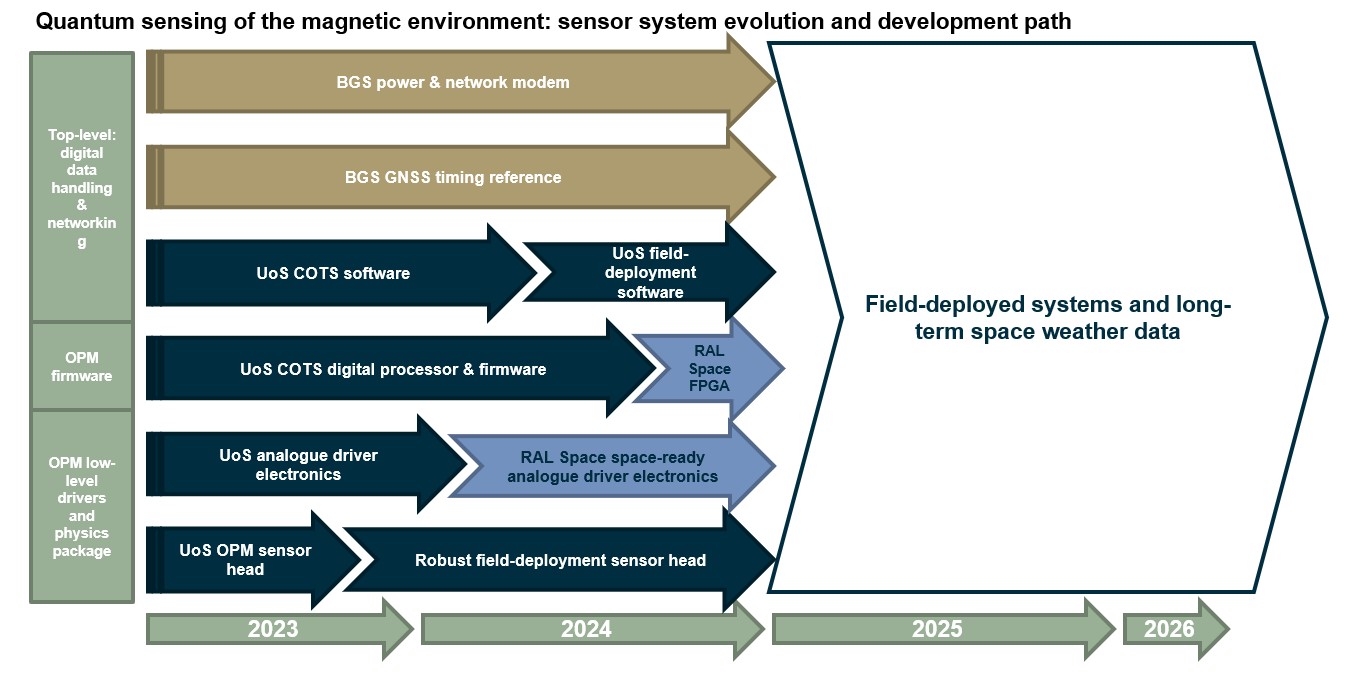

Quantum Sensors: Advancing Technologies
Quantum sensor technology marks a paradigm shift in sensing capabilities, offering unprecedented precision and sensitivity. These developments in quantum sensors promise groundbreaking applications across various fields, revolutionizing measurement and detection techniques.
1. The Quantum Advantage in Sensing
Quantum sensors leverage the principles of quantum mechanics, enabling incredibly precise measurements. They harness quantum phenomena like superposition and entanglement to detect subtle changes in magnetic fields, gravity, and electromagnetic waves, surpassing the capabilities of traditional sensors.
2. Application in Navigation and Imaging
Quantum sensors have immense potential in navigation and imaging systems. Quantum gyroscopes and accelerometers offer highly accurate inertial navigation for autonomous vehicles and precision guidance systems. Quantum-enhanced imaging techniques promise ultra-high-resolution imaging in medical diagnostics and surveillance.
3. Quantum Sensing in Material Sciences
In material sciences, quantum sensors enable the study of materials at a microscopic level. They facilitate the detection of minuscule magnetic fields and properties, aiding in the development of new materials, exploring superconductivity, and enhancing magnetic resonance imaging (MRI) techniques.
4. Impact on Environmental Monitoring
Quantum sensors play a crucial role in environmental monitoring. These sensors can detect subtle changes in environmental parameters like temperature, pressure, and pollutants, enabling more accurate and real-time monitoring of environmental conditions.
5. Challenges and Future Prospects
While quantum sensors offer remarkable capabilities, challenges such as scalability, stability, and integration into existing systems exist. However, ongoing research and development aim to address these challenges, unlocking the full potential of quantum sensors in diverse applications.
Quantum sensor developments signify a new era in sensing technologies, revolutionizing fields from navigation and imaging to environmental monitoring and materials science. As research progresses, the integration of quantum sensors is expected to bring significant advancements in various domains.
For a comprehensive view of Quantum Sensor Developments and their impact across industries, visit Quantum Sensors Developments to explore the transformative potential of these cutting-edge sensing technologies.
Transformative Potential: Edge AI in Edge Computing
Edge AI, the integration of artificial intelligence algorithms into edge computing systems, represents a significant leap forward in the realm of computing technologies. This fusion of AI and edge computing unlocks new capabilities, reshaping data processing, and empowering devices at the edge of networks.
The Synergy of Edge Computing and AI
Edge computing brings computation closer to data sources, reducing latency and enhancing real-time processing. The integration of AI at the edge empowers devices to perform complex analytics and decision-making locally, minimizing the need for continuous data transfer to centralized servers.
The convergence of Edge AI in Edge Computing marks a pivotal shift in technological capabilities. This platform serves as an informative nexus, showcasing the synergy between edge computing and AI, elucidating the applications and advancements in this domain.
Real-Time Data Processing and Analytics
Edge AI enables real-time data processing and analytics, crucial for applications where latency is a critical factor. From smart cities managing traffic flows to industrial machinery optimizing operations, the ability to process and act on data instantaneously is invaluable.
Enhancing Device Autonomy and Efficiency
By embedding AI capabilities into edge devices, autonomy and efficiency are enhanced. Devices can make decisions locally, reducing dependency on continuous network connectivity. This autonomy streamlines operations, especially in scenarios with limited bandwidth or intermittent connectivity.
Addressing Data Privacy and Security
Edge AI promotes data privacy by processing sensitive information locally without transmitting it to external servers. This localized approach enhances security, mitigating risks associated with transmitting sensitive data over networks, bolstering privacy and compliance.
The platform of Edge AI in Edge Computing demystifies the fusion of AI and edge technologies. It acts as a knowledge center, unveiling the potential and challenges associated with deploying AI at the edge of networks.
Challenges and Adaptability
Despite its potential, integrating AI at the edge presents challenges like limited resources and heterogeneous environments. Innovations addressing these challenges are vital for broader adoption and seamless integration into diverse edge ecosystems Edge AI .
Future Visions: AI at the Edge
Looking ahead, the future of AI in edge computing is promising. Advancements in AI algorithms, coupled with edge computing infrastructures, will drive innovation across industries, unlocking new possibilities for real-time analytics, automation, and decision-making.
Edge AI in Edge Computing encapsulates the paradigm shift in computing landscapes. It underscores the fusion of AI and edge technologies, redefining how data is processed, decisions are made, and devices operate on the periphery of networks.
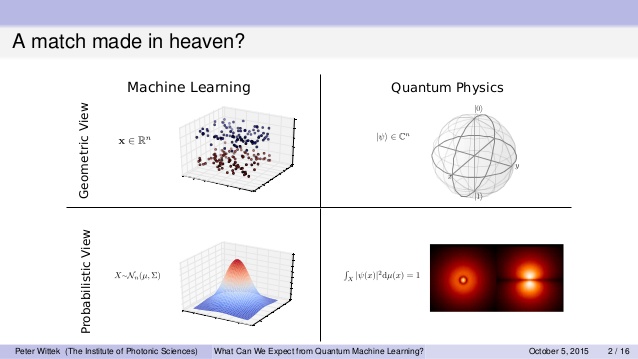

Quantum Machine Learning: Introduction to a Paradigm Shift
In the fascinating intersection of quantum computing and machine learning, Quantum Machine Learning (QML) emerges as a revolutionary paradigm. This article explores the profound implications of QML, unraveling how the marriage of quantum mechanics and machine learning is poised to redefine computational possibilities and transform the landscape of data analysis.
To explore the latest trends and innovations in Quantum Machine Learning, visit Quantum Machine Learning. This platform offers insights into the groundbreaking advancements at the confluence of quantum computing and machine learning, shaping the future of computational intelligence.
Quantum Computing Primer: A Brief Overview
Understanding Quantum Machine Learning begins with delving into the principles of quantum computing. Quantum bits, or qubits, differ from classical bits in their ability to exist in multiple states simultaneously, thanks to superposition. This unique characteristic opens the door to parallel processing and complex computations that classical computers struggle to perform efficiently.
Quantum Machine Learning Algorithms: Unleashing Quantum Speed
In the realm of machine learning, algorithms form the backbone of data analysis and pattern recognition. Quantum Machine Learning algorithms leverage the inherent parallelism of qubits to process vast datasets at unparalleled speeds. This quantum acceleration holds the promise of solving complex optimization problems and training machine learning models more efficiently.
Quantum Entanglement in Machine Learning: A Symbiotic Relationship
Quantum entanglement, a phenomenon where qubits become interconnected regardless of distance, plays a pivotal role in Quantum Machine Learning. Entangled qubits share information instantaneously, enhancing the coordination and efficiency of quantum algorithms. This symbiotic relationship between quantum entanglement and machine learning algorithms paves the way for novel computational approaches.
Quantum Supremacy: Redefining Computational Power
Quantum Machine Learning stands on the cusp of achieving quantum supremacy, a state where quantum computers can outperform classical computers in specific tasks. The exponential speedup provided by qubits in solving certain problems, such as factorization and optimization, challenges the limits of classical computational capabilities. Quantum supremacy heralds a new era in computational power.
Applications Across Industries: Quantum Machine Learning’s Reach
The impact of Quantum Machine Learning extends across diverse industries. From finance and healthcare to logistics and cybersecurity, QML promises transformative solutions. Quantum algorithms can optimize financial portfolios, accelerate drug discovery, enhance supply chain logistics, and fortify cryptographic protocols. The potential applications are as vast as the computational power QML unleashes.
Challenges and Limitations: Navigating the Quantum Landscape
As Quantum Machine Learning advances, it faces challenges and limitations. Quantum systems are susceptible to errors due to decoherence and noise. Quantum error correction becomes a critical pursuit to mitigate these challenges. Additionally, the current scarcity of stable and scalable quantum hardware poses obstacles to the widespread adoption of QML.
Quantum Machine Learning in Practice: Real-World Implementations
Despite challenges, Quantum Machine Learning is making strides in real-world implementations. Researchers and companies are experimenting with quantum algorithms on available quantum hardware, exploring practical applications. As quantum technologies mature, the integration of Quantum Machine Learning into everyday computational tasks inches closer to reality.
The Quantum Machine Learning Ecosystem: Collaborative Innovations
The development of Quantum Machine Learning is a collaborative effort. Quantum physicists, computer scientists, and machine learning experts converge to push the boundaries of quantum and classical computing integration. Open-source platforms, collaborative research initiatives, and interdisciplinary partnerships fuel the growth of the Quantum Machine Learning ecosystem.
Ethical Considerations: Navigating Uncharted Territory
As with any transformative technology, Quantum Machine Learning raises ethical considerations. The potential for unprecedented computational power also poses challenges in terms of data security, privacy, and algorithmic bias. Navigating these ethical considerations becomes paramount as Quantum Machine Learning progresses into uncharted territory.
Future Outlook: Quantum Machine Learning’s Evolution
The journey of Quantum Machine Learning is one of continuous evolution. As quantum hardware advances and researchers uncover new algorithms, the future promises even more groundbreaking applications. Quantum Machine Learning stands at the frontier of computational innovation, with the potential to reshape how we approach complex problem-solving in the digital age.
Conclusion: Quantum Machine Learning as a Catalyst for Change
Quantum Machine Learning represents a nexus of quantum computing and machine learning, pushing the boundaries of what is computationally possible. From the foundational principles of quantum mechanics to real-world applications and ethical considerations, QML stands as a catalyst for change. As Quantum Machine Learning evolves, it sparks a paradigm shift, inviting us to reimagine the limits of computational intelligence and embark on a journey into the unexplored realms of quantum possibilities.
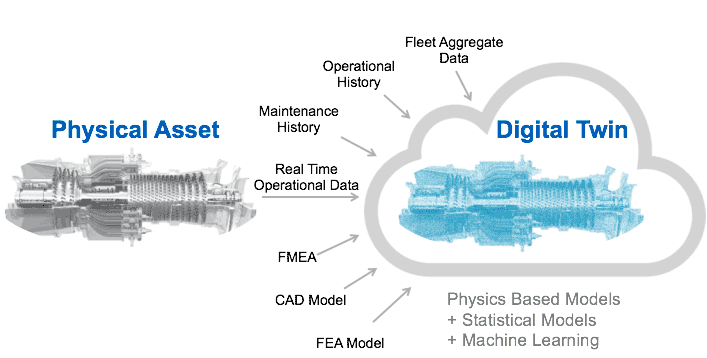

Transforming Manufacturing: Introduction
In the realm of manufacturing, the integration of Digital Twins stands as a transformative force, reshaping traditional processes and propelling industries into a new era. This article delves into the significance of Digital Twins in manufacturing, exploring their applications, benefits, and the paradigm shift they bring to the production landscape.
To explore cutting-edge applications of Digital Twins in manufacturing, visit Digital Twins in Manufacturing. This platform provides insights into the latest trends, technologies, and implementations, guiding manufacturers into the future of production efficiency.
Understanding Digital Twins: A Virtual Mirror of Reality
Digital Twins represent a virtual replica of physical assets, processes, or systems. In manufacturing, this technology creates a digital counterpart of physical machinery, products, and entire production lines. The dynamic synchronization between the physical and digital realms allows manufacturers to monitor, analyze, and optimize processes in real-time.
Real-Time Monitoring and Predictive Analysis: Boosting Efficiency
One of the primary benefits of Digital Twins in manufacturing is real-time monitoring. Sensors embedded in physical assets continuously collect data, feeding the Digital Twin with a stream of information. This data-driven approach enables manufacturers to monitor equipment conditions, identify potential issues, and implement preventive measures. Predictive analysis becomes a powerful tool, minimizing downtime and optimizing overall operational efficiency.
Optimizing Product Development: From Concept to Production
Digital Twins streamline the product development lifecycle, offering a comprehensive view from concept to production. Designers can create virtual prototypes, simulating various scenarios and ensuring optimal performance. This virtual testing minimizes the need for physical prototypes, accelerating the design process and reducing costs. As a result, manufacturers can bring high-quality products to market faster and more efficiently.
Enhancing Maintenance Strategies: Proactive and Predictive Approaches
Traditional maintenance practices are often reactive, addressing issues after they occur. Digital Twins enable a shift to proactive and predictive maintenance strategies. By continuously analyzing real-time data from the physical asset, the Digital Twin can anticipate maintenance needs, schedule interventions, and optimize the lifespan of machinery. This transition reduces unplanned downtime and extends the longevity of equipment.
Simulating and Analyzing Production Processes: Operational Excellence
Digital Twins provide a platform for simulating and analyzing entire production processes. Manufacturers can create digital replicas of their facilities, allowing for in-depth analysis and optimization of workflows. By identifying bottlenecks, inefficiencies, and areas for improvement, manufacturers can achieve operational excellence and enhance the overall productivity of the manufacturing ecosystem.
Ensuring Quality Control: From Raw Materials to Finished Products
Quality control is paramount in manufacturing, and Digital Twins play a pivotal role in ensuring product quality. By monitoring and analyzing data at every stage of production, from the sourcing of raw materials to the assembly of finished products, manufacturers can maintain stringent quality standards. This comprehensive oversight minimizes defects, reduces waste, and enhances the overall quality control process.
Supply Chain Optimization: Navigating Complexity with Precision
The complexity of modern supply chains demands advanced tools for optimization. Digital Twins extend their influence into the supply chain, providing a digital representation of the entire network. This allows manufacturers to visualize and analyze the flow of materials, predict demand fluctuations, and optimize logistics. The result is a more responsive and efficient supply chain that adapts to dynamic market conditions.
Addressing Sustainability Challenges: A Greener Future
In the pursuit of sustainable manufacturing practices, Digital Twins offer valuable insights. By modeling and analyzing energy consumption, resource utilization, and environmental impact, manufacturers can make informed decisions to reduce their carbon footprint. Digital Twins contribute to the realization of environmentally conscious and sustainable manufacturing processes.
Cybersecurity Considerations: Safeguarding Digital Assets
As Digital Twins become integral to manufacturing operations, cybersecurity becomes a critical consideration. Protecting the digital counterpart from cyber threats ensures the integrity of the manufacturing process. Implementing robust cybersecurity measures, including encryption, access controls, and continuous monitoring, is essential to safeguarding Digital Twins and preserving the security of the entire manufacturing ecosystem.
Future Trends and Continued Innovation: A Glimpse Ahead
The journey of Digital Twins in manufacturing is an ongoing saga of innovation. Future trends may include advancements in artificial intelligence, machine learning, and the integration of Internet of Things (IoT) technologies. As manufacturers embrace these evolving technologies, the capabilities of Digital Twins will continue to expand, ushering in a new era of smart, connected, and highly efficient manufacturing processes.
Conclusion: The Digital Twins Revolution
Digital Twins in manufacturing represent a paradigm shift, empowering manufacturers to reimagine, optimize, and revolutionize their operations. From real-time monitoring and predictive analysis to supply chain optimization and sustainability initiatives, the impact of Digital Twins is profound. As the manufacturing landscape embraces this technological revolution, Digital Twins stand as a testament to the limitless possibilities of marrying the physical and digital realms for a more efficient and sustainable future.
Categories
Recent Posts
- The Impact of Adolescent Residential Treatment Centers for Mental Health on Long-Term Stability
- Empowering Health Through a Diabetes App
- Assortment Planning 2.0: Balancing Data Science with Merchant Intuition
- Corporate Shuttle Services: A Competitive Edge for Employee Satisfaction and Retention
- Find Your Inner Peace A Sahaja Guided Meditation
- Schlage Century Smart Home Security, Simplified
- Unlocking Online Success Simple Marketing Tips
- Simple Ragdoll Cat Grooming for Beginners
- Experience the Future with [Product Name]
- Dance Theatre of Harlem A Stunning New Production
Partner
ecommerce web design dubai
ecommerce website development dubai
ecommerce website dubai
ecommerce development in dubai
ecommerce development company dubai
ecommerce development company in dubai
ecommerce development dubai
ecommerce website development companies in dubai
ecommerce website development company in dubai
ecommerce website development in dubai
ecommerce website design company near me
ecommerce website design company dubai
ecommerce web development dubai
web ecommerce development
ecommerce website in uae
ecommerce website design dubai
ecommerce web design agency
Partner
app design Dubai
app developers in dubai
app development companies in dubai
app development dubai
application development dubai
app developers uae
app development companies in uae
app development uae
mobile App designer Dubai
mobile App Development Company Dubai
mobile app development company in dubai
mobile app development dubai
mobile application dubai
mobile app development company in uae
mobile app development uae
mobile application development uae
mobile app development company
Partner
Hire Opencart Developers
Hire Zend Developers
Hire VueJs Developers
Hire Symfony Developers
Hire CodeIgniter Developers
Hire ExpressJs Developers
Hire Xamarin Developers
Hire JQuery Developers
Hire NextJs Developers
Hire WooCommerce Developers
Hire ReactJs Developers
Hire NodeJs Developers
Hire Laravel Developers
Hire Magento Developers
Hire Flutter Developers
Hire Swift Developers
Hire Angular Developers
Hire WordPress Developers
Hire IOS Developers
Hire Java Developers
Hire PHP Developers
Hire Hybrid App Developers
Hire Android Developers
Hire UIUX Designers
Hire Native App Developers
Hire JavaScript Developers
Offshore Developers
Hire Graphic Designers
Hire Net Developers
Hire Web Designers
